If you try to find information on the stratification of America on the Internet, you will discover that the vast bulk of them claim that there are really just three classes of social stratification. This is incorrect. There are nine. Here we will discuss these nine social classes. This post is a prelude to another article that discusses how the United States is migrating from a class system towards a caste system. Buckle up, it’s going to be a real surprise.
First off, why nine?
I argue that many “experts” in this matter overlook the obvious, and classify distinctly separate classes with one of the three common classes. Perhaps this is due to force of habit, as the classes all pre-date the 1960s. But perhaps it is to conditioning. People, most especially Americans, have been accustomed to a new “normal”; an “ever changing normal”. This makes people, who are otherwise quite intelligent, ignore trends that lay there right in front of their eyes.
The three classes are, of course, the…
- The Upper Class
- The Middle Class
- The Low Class
Additionally, one must take into account the 13th amendment which formally established…
- The Slave Class
What? You say! The 13th Amendment banned slavery, not granted it.
Uh. No it did not. Read the text of the amendment…
Thirteenth Amendment. The full text of the amendment is: Neither slavery nor involuntary servitude, except as a punishment for crime whereof the party shall have been duly convicted, shall exist within the United States, or any place subject to their jurisdiction. Thirteenth Amendment | United States Constitution ...
So yes, any one who is convicted of a crime, and becomes a felon becomes a member of the Slavery Class. And maybe that will help everyone understand why so many blacks and Negros were arrested after the American Civil War. It also explains the great saturation of laws in the 1920’s that banned the habits, and vices of the Negro population, turning many of them into felons.
So, yeah. There is a fourth class; the slavery class. And once you are in it, it is extremely difficult to leave it.
Ah, there’s another class as well…
- The Untouchables class
This class is the “Sex Offender Class”, and it is even worse than the Slavery Class. Once you enter that class, you have very little rights, no freedoms, and pretty much will live in poverty for the rest of your life. You can describe this class by income, or demographics, but the reality is that this class is mandated by law.
It’s to take evil child molester “off the streets”. And everyone believes it. Though it’s been my experience that of those arrested and convicted only a very tiny number fit that public narrative. Most are thrown into that class for other reasons.
But wait! There’s more!
There’s the…
- Gig class.
This class is a newly formed class where the workers float between Low Class and Middle Class. They use their skills, time and effort as opportunities come and go. Unlike the low class, they can periodically rise out of that class, but then sink right back down when their “gig” dries up. This class consists of Uber Drivers, and IoT designers.
Similarly there is the…
- Per Diem Class
This is similar to the Gig Class except that the skill level is much higher, the monetary rewards are much higher, and the time period cycle between jobs is much longer. These workers are much in demand, and command high salary rates with supportive Per Diem costs covered by monthly bonuses.
And there is the exclusive class…
- The Oligarchy class
This class is the territory of the super rich, the mega-billionaires. They are not only rich and powerful, but they control major segments of the governments as well. They are, in effect, the “untouchables”. These people, these families, are far more powerful, capable and “connected” than the upper class. They are in a group of their own, and it amazes me that modern day sociologists do not recognize this class at all.
Finally, we have the…
- The undocumented class.
Which is much larger than anyone knows. It mostly concerns non-citizens who live within the United States, who often work and collect benefits, but do not officially exist. To ignore this enormous segment of the population is disingenuous.
Summary of the Classes
OK. So here is a summary…
- The Oligarchy class
- The Upper Class
- The Per Diem Class
- The Middle Class
- The Gig Class
- The Low Class
- The Slave Class
- The Untouchables
- The Undocumented Class.
The basic rules
A “class” is similar to a caste. In that it is extremely difficult to move from one class to another. Movement can happen, it’s just that it is extremely rare.
The primary difference between “class” and “caste” is that a caste system keeps you locked into your caste. While in “class” downwards movement to a lower class is always possible. While upwards movement is outrageously difficult, and extremely rate.
My GOD! America is like an old game of “chutes and ladders”.
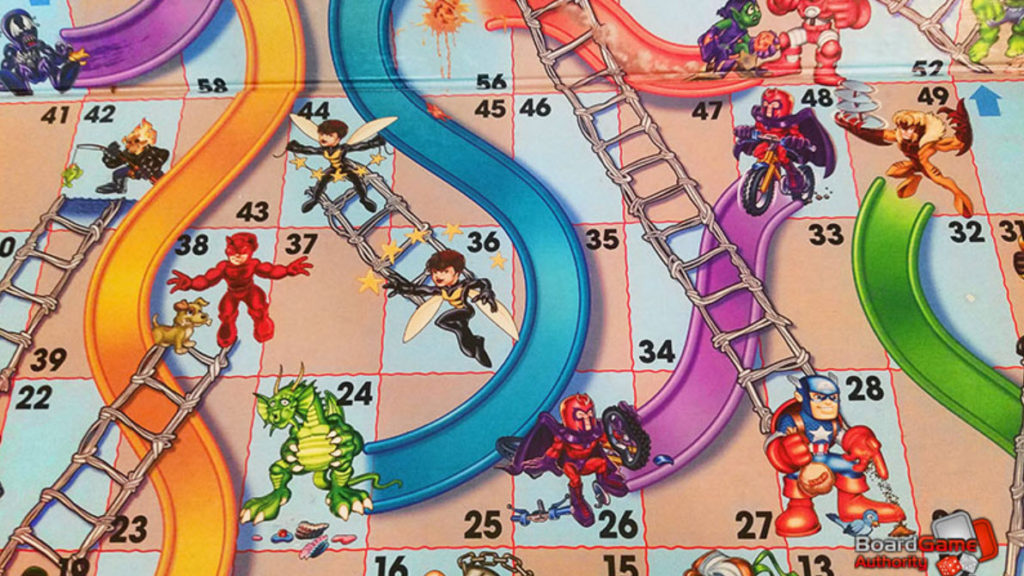
Introduction
Let’s get started.
Aaron grew up on a farm in rural Ohio, left home to serve in the Army, and returned a few years later to take over the family farm. He moved into the same house he had grown up in and soon married a young woman with whom he had attended high school. As they began to have children, they quickly realized that the income from the farm was no longer sufficient to meet their needs. Aaron, with little experience beyond the farm, accepted a job as a clerk at a local grocery store. It was there that his life and the lives of his wife and children were changed forever.
One of the managers at the store liked Aaron, his attitude, and his work ethic. He took Aaron under his wing and began to groom him for advancement at the store. Aaron rose through the ranks with ease. Then the manager encouraged him to take a few classes at a local college. This was the first time Aaron had seriously thought about college. Could he be successful, Aaron wondered? Could he actually be the first one in his family to earn a degree? Fortunately, his wife also believed in him and supported his decision to take his first class. Aaron asked his wife and his manager to keep his college enrollment a secret. He did not want others to know about it in case he failed.
Aaron was nervous on his first day of class. He was older than the other students, and he had never considered himself college material. Through hard work and determination, however, he did very well in the class. While he still doubted himself, he enrolled in another class. Again, he performed very well. As his doubt began to fade, he started to take more and more classes. Before he knew it, he was walking across the stage to receive a Bachelor’s degree with honors. The ceremony seemed surreal to Aaron. He couldn’t believe he had finished college, which once seemed like an impossible feat.
Shortly after graduation, Aaron was admitted into a graduate program at a well-respected university where he earned a Master’s degree. He had not only become the first from his family to attend college but also he had earned a graduate degree. Inspired by Aaron’s success, his wife enrolled at a technical college, obtained a degree in nursing, and became a registered nurse working in a local hospital’s labor and delivery department. Aaron and his wife both worked their way up the career ladder in their respective fields and became leaders in their organizations. They epitomized the American Dream—they worked hard and it paid off.
This story may sound familiar. After all, nearly one in three first-year college students is a first-generation degree candidate, and it is well documented that many are not as successful as Aaron.
According to the Center for Student Opportunity, a national nonprofit, 89 percent of first-generation students will not earn an undergraduate degree within six years of starting their studies. In fact, these students “drop out of college at four times the rate of peers whose parents have postsecondary degrees” (Center for Student Opportunity quoted in Huot 2014).
What is Social Stratification?
In the upper echelons of the working world, people with the most power reach the top. These people make the decisions and earn the most money. The majority of Americans will never see the view from the top.
Sociologists use the term social stratification to describe the system of social standing. Social stratification refers to a society’s categorization of its people into rankings of socioeconomic tiers based on factors like wealth, income, race, education, and power.
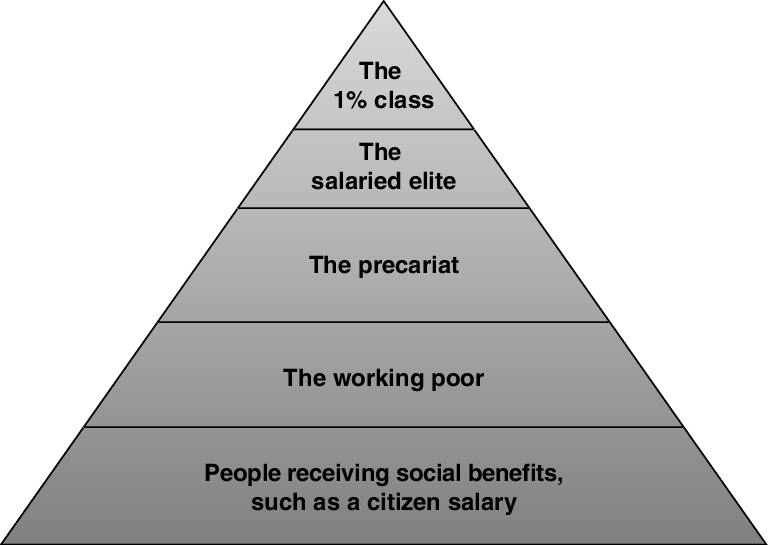
.
You may remember the word “stratification” from geology class. The distinct vertical layers found in rock, called stratification, are a good way to visualize social structure. Society’s layers are made of people, and society’s resources are distributed unevenly throughout the layers. The people who have more resources represent the top layer of the social structure of stratification. Other groups of people, with progressively fewer and fewer resources, represent the lower layers of our society.
In the United States, people like to believe everyone has an equal chance at success. It’s a hopeful narrative and a lively premise, but (for the most part) it is false.
To a certain extent, Aaron illustrates the belief that hard work and talent—not prejudicial treatment or societal values—determine social rank. This emphasis on self-effort perpetuates the belief that people control their own social standing. In fact, this narrative is played often and over in America. It creates the illusion that everyone can “pull themselves up by their bootstraps” and make a life for themselves in America.
It has become a political rallying cry.
But it is false.
The data is as plain as day. It is as damning as it is clear. The rate of upward movement in the American class system is negligible at best, and completely absent for the vast majority of American citizenry.
- Harder for Americans to Rise From Lower Rungs
- There’s a reason why you can’t afford to live in America
- More middle-class families say ‘American dream’ is out of …
- Middle-class Americans getting crushed by rising health …
Sociologists recognize that social stratification is a society-wide system that makes inequalities apparent. While there are always inequalities between individuals, sociologists are interested in larger social patterns. Stratification is not about individual inequalities, but about systematic inequalities based on group membership, classes, and the like. No individual, rich or poor, can be blamed for social inequalities.
The structure of society affects a person’s social standing.
Although individuals may support or fight inequalities, social stratification is created and supported by society as a whole. In America the rich people want to associate with other wealthy individuals, and shun the rest. Anyone who has tried to pledge in certain fraternities or sororities can well see this in action.
Likewise, the same holds true for the lower class strata as well.

In America there is a stigma about association with a “lower” class than what you belong to. I cannot help but think that Donald Trump or Joe Biden would be loathe to help this poor woman up as she struggles to purchase a six-pack of Pepsi.
.
Factors that define stratification vary in different societies. In most societies, stratification is an economic system, based on wealth, the net value of money and assets a person has, and income, a person’s wages or investment dividends. While people are regularly categorized based on how rich or poor they are, other important factors influence social standing.
For example, in some cultures, wisdom and charisma are valued, and people who have them are revered more than those who don’t. In some cultures, the elderly are esteemed; in others, the elderly are disparaged or overlooked. Societies’ cultural beliefs often reinforce the inequalities of stratification.
One key determinant of social standing is the social standing of our parents.
Parents tend to pass their social position on to their children. People inherit not only social standing but also the cultural norms that accompany a certain lifestyle. They share these with a network of friends and family members. Social standing becomes a comfort zone, a familiar lifestyle, and an identity.
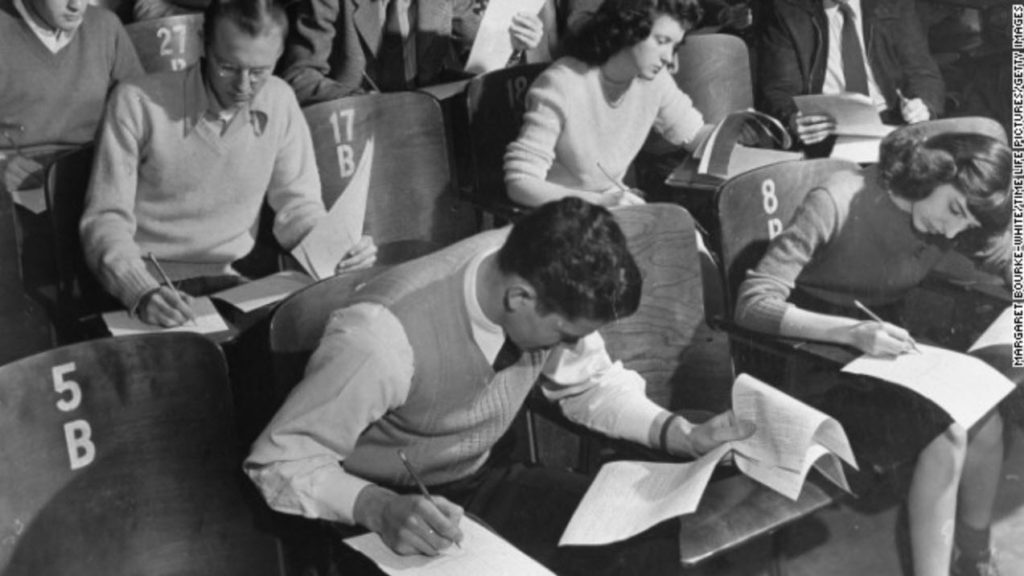
People inherit not only social standing but also the cultural norms that accompany a certain lifestyle. They share these with a network of friends and family members. Social standing becomes a comfort zone, a familiar lifestyle, and an identity. Therefore it is desirable for the parents to push their children to attend college and excel.
.
This is one of the reasons first-generation college students do not fare as well as other students.
Other determinants are found in a society’s occupational structure. Teachers, for example, often have high levels of education but receive relatively low pay. Many believe that teaching is a noble profession, so teachers should do their jobs for love of their profession and the good of their students—not for money. Yet no successful executive or entrepreneur would embrace that attitude in the business world, where profits are valued as a driving force. Cultural attitudes and beliefs like these support and perpetuate social inequalities.
Recent Economic Changes and U.S. Stratification
As a result of the Great Recession that rocked the United States economy in the last few years, many families and individuals found themselves struggling like never before. The nation fell into a period of prolonged and exceptionally high unemployment.
While no one was completely insulated from the recession, perhaps those in the lower classes felt the impact most profoundly.

.
Before the 1990’s, many were living paycheck to paycheck or even had been living comfortably. As the recession hit, they were often among the first to lose their jobs. Unable to find replacement employment, they faced more than loss of income. Their homes were foreclosed, their cars were repossessed, and their ability to afford healthcare was taken away. This put many in the position of deciding whether to put food on the table or fill a needed prescription.
But the Great Recession, like the Great Depression, has changed social attitudes.
Where once it was important to demonstrate wealth by wearing expensive clothing items like Calvin Klein shirts and Louis Vuitton shoes, now there’s a new, thriftier way of thinking. In many circles, it has become hip to be frugal. It’s no longer about how much we spend, but about how much we don’t spend.
Systems of Stratification
Sociologists distinguish between two types of systems of stratification.
- Closed systems accommodate little change in social position. They do not allow people to shift levels and do not permit social relationships between levels.
- Open systems, which are based on achievement, allow movement and interaction between layers and classes.
Different systems reflect, emphasize, and foster certain cultural values and shape individual beliefs. Stratification systems include class systems and caste systems, as well as meritocracy.
The Caste System – India
India used to have a rigid caste system until it was banned. The people in the lowest caste suffered from extreme poverty and were shunned by society. Some aspects of India’s defunct caste system remain socially relevant.
Caste systems are closed stratification systems in which people can do little or nothing to change their social standing. A caste system is one in which people are born into their social standing and will remain in it their whole lives.
People are assigned occupations regardless of their talents, interests, or potential. There are virtually no opportunities to improve a person’s social position.

.
In the Hindu caste tradition, people were expected to work in the occupation of their caste and to enter into marriage according to their caste. Accepting this social standing was considered a moral duty. Cultural values reinforced the system. Caste systems promote beliefs in fate, destiny, and the will of a higher power, rather than promoting individual freedom as a value. A person who lived in a caste society was socialized to accept his or her social standing.
Although the caste system in India has been officially dismantled, its residual presence in Indian society is deeply embedded. It still exists. It’s just that the government refuses to acknowledge it’s existence and provides “lip service” to any evidence of it’s existence.
In rural areas, aspects of the tradition are more likely to remain, while urban centers show less evidence of this past. In India’s larger cities, people now have more opportunities to choose their own career paths and marriage partners. As a global center of employment, corporations have introduced merit-based hiring and employment to the nation.
The Class System – United States, the UK, Australia
A class system is based on money, social factors, individual achievement, politics and law.
A class consists of a set of people who share similar status with regard to factors like wealth, income, education, and occupation.
Unlike caste systems, class systems are open. People are free to gain a different level of education or employment than their parents. They can also socialize with and marry members of other classes, which allows people to move from one class to another.
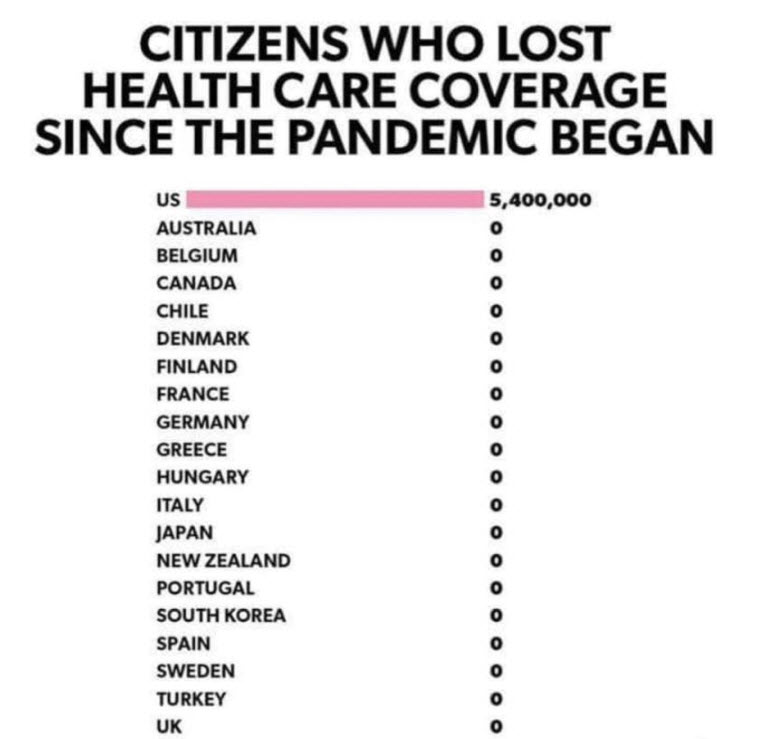
In the United States, the Oligarchy class, and the upper Class have no concern for the United States citizenry. They run the nation, and make the laws so that only their class benefits.
In a class system, occupation is not fixed at birth. Though family and other societal models help guide a person toward a career, personal choice plays a role.
In class systems, people have the option to form exogamous marriages, unions of spouses from different social categories.
Marriage in these circumstances is based on values such as love and compatibility rather than on social standing or economics. Though social conformities still exist that encourage people to choose partners within their own class, people are not as pressured to choose marriage partners based solely on those elements. Marriage to a partner from the same social background is an endogamous union.
Meritocracy – China
Meritocracy is an ideal system based on the belief that social stratification is the result of personal effort—or merit—that determines social standing.
High levels of effort will lead to a high social position, and vice versa. The concept of meritocracy is considered an ideal in the West. It is believed that it is unobtainable. That is because the Western societies simply cannot understand a society based on Confucian thought. Therefore, they argue that a society has never existed where social rank was based purely on merit.
Those in the West argue this because of the complex structure of societies, processes like socialization, and the realities of economic systems, social standing is influenced by multiple factors—not merit alone.
In the West, inheritance and pressure to conform to norms, for instance, and disrupts the notion of a pure meritocracy. Yet, China comes as realistically close to that ideal than any other nation in history.
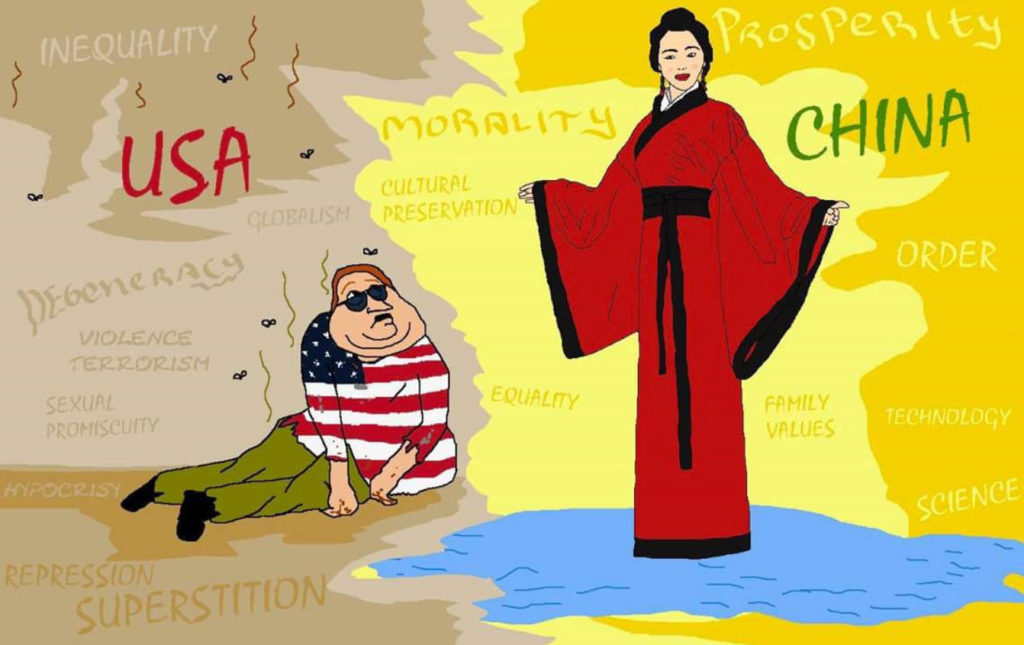
Status Consistency
Social stratification systems determine social position based on factors like income, education, and occupation. Sociologists use the term status consistency to describe the consistency, or lack thereof, of an individual’s rank across these factors. Caste systems correlate with high status consistency, whereas the more flexible class system has lower status consistency.
To illustrate, let’s consider Susan.
Susan earned her high school degree but did not go to college. That factor is a trait of the lower-middle class. She began doing landscaping work, which, as manual labor, is also a trait of lower-middle class or even lower class. However, over time, Susan started her own company. She hired employees. She won larger contracts. She became a business owner and earned a lot of money. Those traits represent the upper-middle class. There are inconsistencies between Susan’s educational level, her occupation, and her income.
In a class system, a person can work hard and have little education and still be in middle or upper class, whereas in a caste system that would not be possible. In a class system, low status consistency correlates with having more choices and opportunities.
Social Stratification and Mobility in the United States
Most sociologists define social class as a grouping based on similar social factors like wealth, income, education, and occupation. These factors affect how much power and prestige a person has. Social stratification reflects an unequal distribution of resources.
In most cases, having more money means having more power or more opportunities.
Stratification can also result from physical and intellectual traits. Categories that affect social standing include family ancestry, race, ethnicity, age, and gender. In the United States, standing can also be defined by characteristics such as IQ, athletic abilities, appearance, personal skills, and achievements.
Additionally, in America, there are legal stratifications. That is, forced class membership by law.
- All Felons enter the Slave Class.
- All Sex Offender Felons enter the Untouchables Class.
- All undocumented, or non-citizens, are in the Undocumented Class.
Standard of Living
In the last century, the United States has seen a steady rise in its standard of living, the level of wealth available to a certain socioeconomic class in order to acquire the material necessities and comforts to maintain its lifestyle.
The standard of living is based on factors such as income, employment, class, poverty rates, and housing affordability. Because standard of living is closely related to quality of life, it can represent factors such as the ability to afford a home, own a car, and take vacations.
In the United States, a small portion of the population has the means to the highest standard of living.
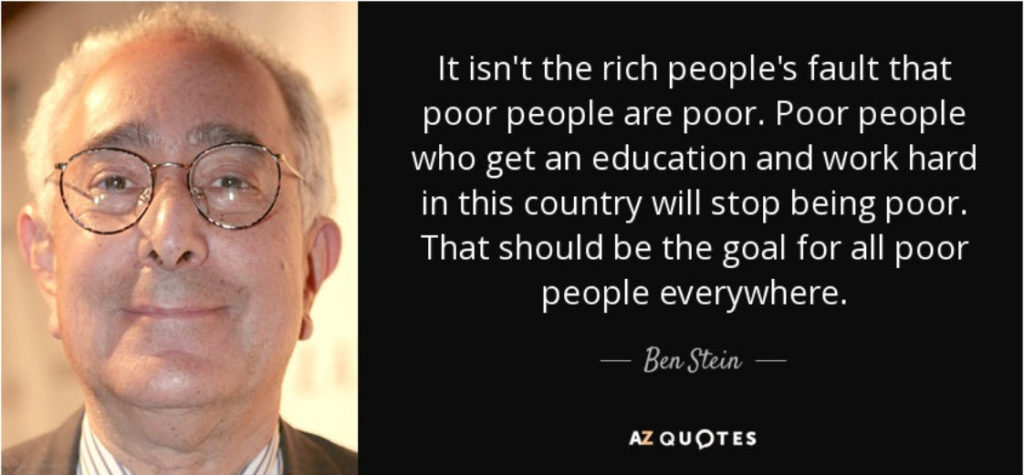
The Upper class are insulated from the realities of life in the other class segments. As time moves forward they become more and more insulated from reality, and live trapped in a bubble that represents a life that does not exist.
.
A Federal Reserve Bank study shows that a mere one percent of the population holds one-third of our nation’s wealth (Kennickell 2009). Wealthy people receive the most schooling, have better health, and consume the most goods and services. Wealthy people also wield decision-making power.
Many people think of the United States as a “middle-class society.” They think a few people are rich, a few are poor, and most are fairly well off, existing in the middle of the social strata.
But as the study mentioned above indicates, there is NOT an even distribution of wealth.
Millions of women and men struggle to pay rent, buy food, find work, and afford basic medical care. Women who are single heads of household tend to have a lower income and lower standard of living than their married or male counterparts. This is a worldwide phenomenon known as the “feminization of poverty”—which acknowledges that women disproportionately make up the majority of individuals in poverty across the globe.
- US ranked among worst countries to raise a family, study says
- America ranked one of the worst countries to raise a family
- US ranked as one of the worst countries to raise your family
- Study: US Ranked Worst Country to Raise a Family ..
In the United States, as in most high-income nations, social stratifications and standards of living are in part based on occupation (Lin and Xie 1988).
Aside from the obvious impact that income has on someone’s standard of living, occupations also influence social standing through the relative levels of prestige they afford.
Employment in medicine, law, or engineering confers high status. Teachers and police officers are generally respected, though not considered particularly prestigious. At the other end of the scale, some of the lowest rankings apply to positions like waitress, janitor, and bus driver.
The most significant threat to the relatively high standard of living that everyone is accustomed to in the United States is the decline of the middle class. The size, income, and wealth of the middle class have all been declining since the 1970s. This is occurring at a time when corporate profits have increased more than 141 percent, and CEO pay has risen by more than 298 percent (Popken 2007).
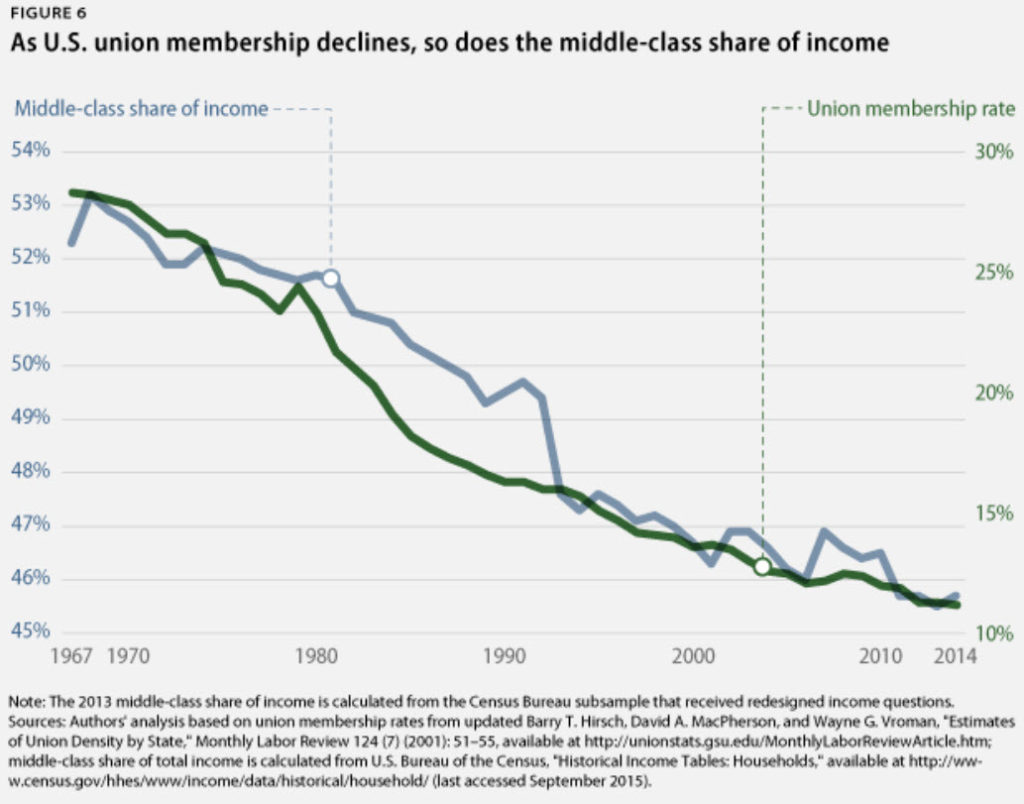
The decline in the American middle Class parallels the decline in union organizations.
.
G. William Domhoff, of the University of California at Santa Cruz, reports that “In 2010, the top 1% of households (the upper class) owned 35.4% of all privately held wealth, and the next 19% (the managerial, professional, and small business stratum) had 53.5%, which means that just 20% of the people owned a remarkable 89%, leaving only 11% of the wealth for the bottom 80% (wage and salary workers)” (Domhoff 2013).
- 35.0% of wealth – Oligarchy Class.
- 53.5% of wealth – Upper Class
————————————————
- 89.0% of wealth – The top two classes
While several economic factors can be improved in the United States (inequitable distribution of income and wealth, feminization of poverty, stagnant wages for most workers while executive pay and profits soar, declining middle class), we are fortunate that the poverty experienced here is most often relative poverty and not absolute poverty.
Whereas absolute poverty is deprivation so severe that it puts survival in jeopardy, relative poverty is not having the means to live the lifestyle of the average person in your country.
- Absolute poverty = Personal survival is difficult.
- Relative poverty = Not having the means to live an average lifestyle.
As a wealthy developed country, the United States has the resources to provide the basic necessities to those in need through a series of federal and state social welfare programs. The best-known of these programs is likely the Supplemental Nutrition Assistance Program (SNAP), which is administered by the United States Department of Agriculture. (This used to be known as the food stamp program.)
The program began in the Great Depression, when unmarketable or surplus food was distributed to the hungry. It was not until 1961 that President John F. Kennedy initiated a food stamp pilot program. His successor Lyndon B. Johnson was instrumental in the passage of the Food Stamp Act in 1964. In 1965, more than 500,000 individuals received food assistance. In March 2008, on the precipice of the Great Recession, participation hovered around 28 million people. During the recession, that number escalated to more than 40 million (USDA).
However, for all practical purposes, the United States distribution of such aid is insufficient, spotty and fraught with fraud. It’s a “dead horse”, and fraught with inefficiencies, corruption and abuse.
Urban Dictionary: dead horse https://www.urbandictionary.com/define.php?term=dead horse dead horse Military term for an issue that has been addressed over and over and over again. Comes from the expression ”You’re beating a dead horse.”, meaning that talking about the issue is not going to change anything so drop it.

Social Classes in the United States
Does a person’s appearance indicate class? Can you tell a man’s education level based on his clothing? Do you know a woman’s income by the car she drives?
For sociologists, categorizing class is a fluid science.
While I have identified nine classes in America, I am the outlier. Sociologists generally identify three levels of class in the United States: upper, middle, and lower class. Within each class, there are many subcategories. Wealth is the most significant way of distinguishing classes, because wealth can be transferred to one’s children and perpetuate the class structure.
One economist, J.D. Foster, defines the 20 percent of U.S. citizens’ highest earners as “upper income,” and the lower 20 percent as “lower income.” The remaining 60 percent of the population make up the middle class. But by that distinction, annual household incomes for the middle class range between $25,000 and $100,000 (Mason and Sullivan 2010).
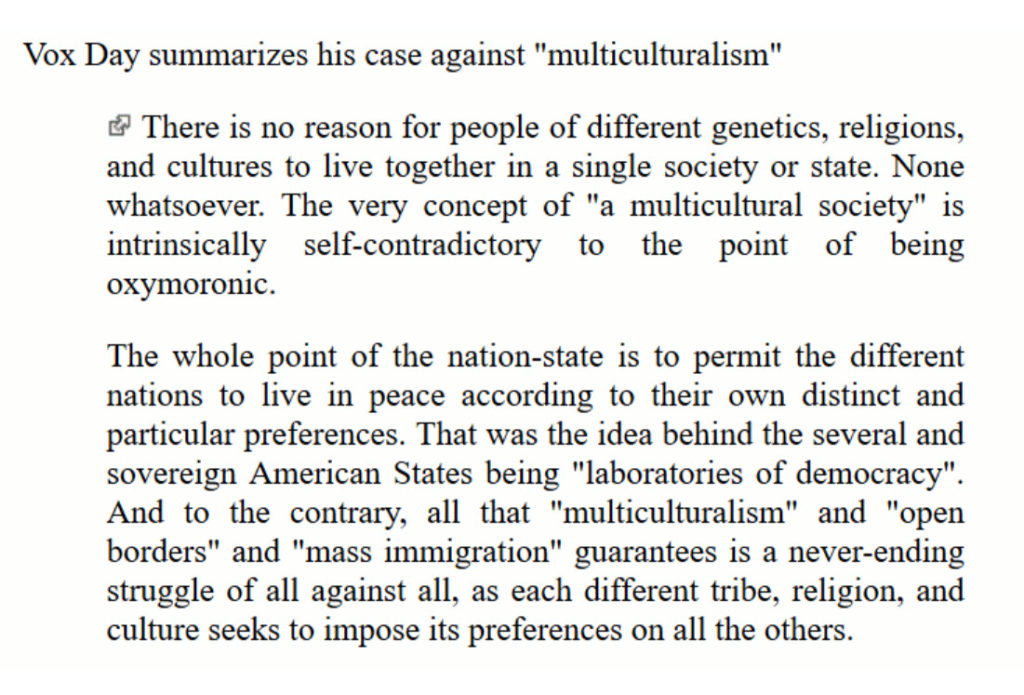
One sociological perspective distinguishes the classes, in part, according to their relative power and control over their lives. The upper class not only have power and control over their own lives but also their social status gives them power and control over others’ lives. The middle class doesn’t generally control other strata of society, but its members do exert control over their own lives. In contrast, the lower class has little control over their work or lives. Below, we will explore the major divisions of U.S. social class and their key subcategories.
The Oligarchy Class
The upper class is considered the top, and only the powerful elite get to see the view from there. In the United States, people with extreme wealth make up 1 percent of the population, and they own one-third of the country’s wealth (Beeghley 2008).
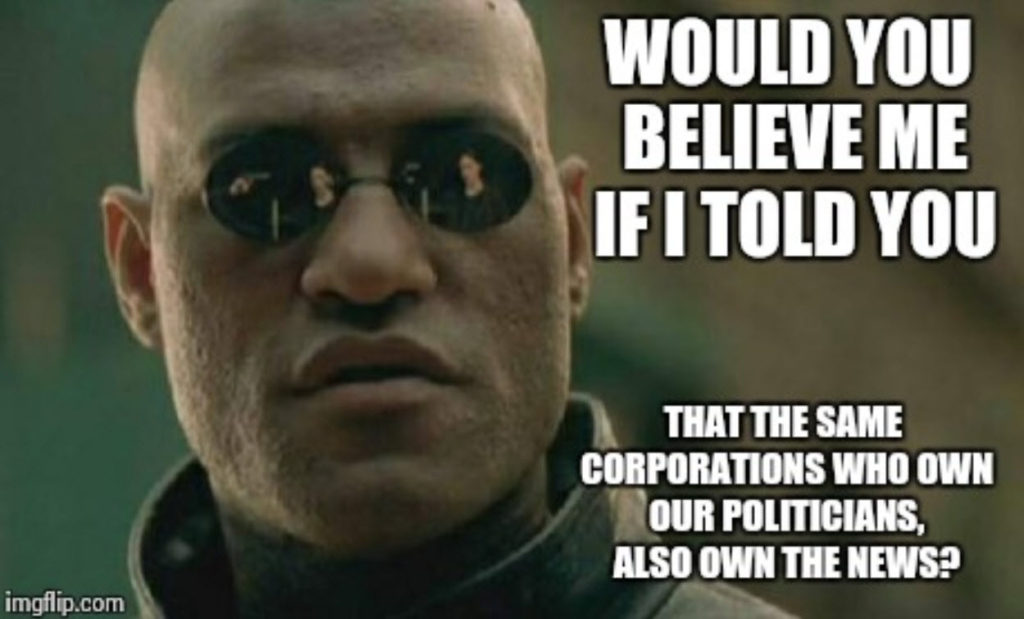
The Oligarchy class use their wealth to control the rest of society.
The richest 1% know the secrets to building wealth, and nothing makes that more evident than the statistics about how they stack up to the 99% that most of us belong to. Additionally, once they reach a certain stage of wealth and income, they tend to use it to control the government, and thus create a bubble of isolation around themselves for protection. The laws do not apply to them.
- Tax Brackets Are A Fiction And Barely Apply To The Wealthy
- Do Rich People Get Off Easier When They Break the Law …
- How the Supreme Court Favors the Rich and Powerful | Time
- Justice ‘only for the wealthy’: Law Society condemns legal …
- Substantial Income of Wealthy Households Escapes Annual …
- The ultra-rich break the rules more often, says psychologist
1. It takes an annual income of $421,926 to join the 1% in the U.S.
When we think of the 1%, we often think of people raking in seven figures a year, but it only takes the comparatively modest figure of $421,926 to join the 1% in the U.S., according to data from the Economic Policy Institute (EPI). That’s an average of about $35,161 per month or about $1,156 per day.
Being in the 1% of your state may cost more or less than this, though. Connecticut residents will need to earn a whopping $700,800 per year to join this elite group while Mississippi residents can join the 1% with a mere $254,362 in annual income.
2. The richest 1% earn 26.3 times more than the bottom 99%.
The average one-percenter can expect to earn almost $1,317,000 per year, according to the EPI study. By contrast, the average 99-percenter brings home just $50,107 per year. That puts the average 1% income about 26.3 times higher than the average income for the rest of the country.
This ratio also varies by state. New York has the largest income inequality gap with the top 1% taking home 44.4 times what the bottom 99% earn in that state. Alaska has the lowest income inequality gap. Its 1% only earns 12.3 times what its bottom 99% earn.
3. The top 1% holds 42.5% of the national wealth.
The wealthiest 1% of U.S. residents — about 3.29 million people — hold 42.5% of our national wealth, while the remaining 325.7 million people share the remaining 57.5%, according to Inequality.org.
No other country in the world has so much wealth concentrated in the hands of the few. In the Netherlands, which had the next-largest income inequality gap according to the Inequality.org survey, the 1% only holds 28% of the country’s wealth.
And how this manifests…

And, make no mistake, the Oligarchy Class IS the DE FACTO United States today…
As a fan of old movies in general and Sunset Boulevard in particular, I keep coming back to how the psychological profile of Norma Desmond’s character seems so reminiscent of the United States right now – or more precisely the political class that dictates its policies and the narrative used to maintain the illusion. After the end of the Cold War, Washington was the grand dame on the world stage, at the peak of her powers economically and militarily. And she wielded her power without apology for years, becoming entitled to wield it – making demands and bossing others around whom she perceived to be lesser lights. She’s declining now but doesn’t accept it – continuing to bomb other nations without remorse, assassinating foreign military leaders, sanctioning 1/3 of the world’s population, dotting every corner of the globe with military bases, and engaging in brinksmanship – all while continuing to proclaim her greatness, exceptionalism and indispensability. Other players on the world stage seem to see through the masquerade, but still feel the need to tiptoe around her. Having a population whose life expectancy is decreasing, an infrastructure that rates a D+ from civil engineers, doesn’t manufacture much of its essential needs, and who can’t even competently handle a public health crisis doesn’t upset the story that America continues to tell herself. Rather than accept her declining stature and use whatever influence she still has to engineer a soft landing domestically and work with the rest of the world toward a multi-polar order that values peaceful co-existence, America seems to have chosen the Norma Desmond path: very entitled, very narcissistic, and dangerously deluded. -Is the US the Norma Desmond of the world stage?
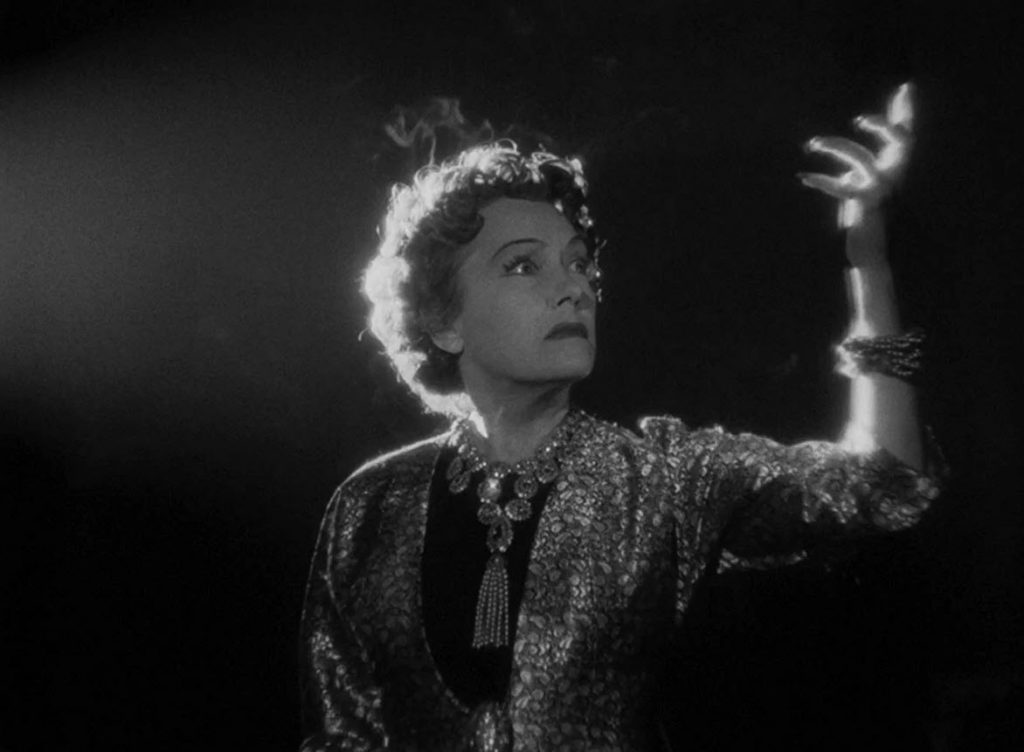
Upper Class
Money provides not just access to material goods, but also access to a lot of power.
Range is $200,000 to $420,000 / year.
These people are the direct subordinates reporting to the owners; the oligarchy.
- As corporate leaders, members of the upper class make decisions that affect the job status of millions of people.
- As media owners, they influence the collective identity of the nation. They run the major network television stations, radio broadcasts, newspapers, magazines, publishing houses, and sports franchises.
- As board members of the most influential colleges and universities, they influence cultural attitudes and values.
- As philanthropists, they establish foundations to support social causes they believe in.
- As campaign contributors, they sway politicians and fund campaigns, sometimes to protect their own economic interests.

I used to hate cartoons like this. But I learned that this narrative is true. It is extraordinarily difficult to raise above and out of your social-economic class. While there are instances, from recent history of people who have climbed out, they are practically few, and far between. It is not as common as the “news” media wold lead you to believe.
.
U.S. society has historically distinguished between “old money” (inherited wealth passed from one generation to the next) and “new money” (wealth you have earned and built yourself). While both types may have equal net worth, they have traditionally held different social standings.
People of old money, firmly situated in the upper class for generations, have held high prestige. Their families have socialized them to know the customs, norms, and expectations that come with wealth. Often, the very wealthy don’t work for wages. Some study business or become lawyers in order to manage the family fortune. Others, such as Paris Hilton and Kim Kardashian, capitalize on being a rich socialite and transform that into celebrity status, flaunting a wealthy lifestyle.
However, new-money members of the upper class are not oriented to the customs and mores of the elite. They haven’t gone to the most exclusive schools. They have not established old-money social ties. People with new money might flaunt their wealth, buying sports cars and mansions, but they might still exhibit behaviors attributed to the middle and lower classes.

The Per Diem Class
This is a relatively transient class, that came into being in the 1980’s. They flourished during the 2000’s and are now sliding into obscurity. The members mostly being replaced by gig class, and middle class technical workers on a rotating basis.
Per diem the noun, is an amount of money someone allots to you for daily expenditure, such as for business. Similarly, the adjective "per diem" means "daily" and is usually related to costs or expenses that happen on a daily basis. Lastly, "per diem" is also an adverb meaning literally "by the day." If you only work on days you are needed, you work "per diem."
This is a class of professionals that have both the skills, education and experience to perform highly specialized tasks for limited periods of time. They are often considered “rent a engineers” by industry.

As such, they are very specialized and thus often sit between job opportunities without bringing in any income. Then, when an opportunity arises, they can command enormous rates for short-term work. These people are employed in advanced defense technologies, on oil rigs and in difficult situations.
They “float” between having the income of Upper Class, and having no income at all.
Middle Class
Many people consider themselves middle class, but there are differing ideas about what that means.
People with annual incomes of $150,000 call themselves middle class, as do people who annually earn $30,000. That helps explain why, in the United States, the middle class is broken into upper and lower subcategories.
- Upper middle class – $100, 000 to $200,000
- Middle, middle class – $50,000 to $100,000
- Lower Middle class – $25,000 to $50,000
Upper-middle-class people tend to hold bachelor’s and postgraduate degrees. They’ve studied subjects such as business, management, law, or medicine. Lower-middle-class members hold bachelor’s degrees from four-year colleges or associate’s degrees from two-year community or technical colleges.
Comfort is a key concept to the middle class.
Middle-class people work hard and live fairly comfortable lives. Uppermiddle- class people tend to pursue careers that earn comfortable incomes. They provide their families with large homes and nice cars. They may go skiing or boating on vacation. Their children receive high-quality education and healthcare (Gilbert 2010).
In fact, what you do with your one to two week vacation time pretty much is an indicator as to where you reside on the Middle Class scale.
- Packaged vacations every year = Upper middle class.
- One packaged vacation a decade = middle, middle class.
- Vacation is a road trip to see relatives = Low middle class.

In the lower middle class, people hold jobs supervised by members of the upper middle class.
They fill technical, lower level management or administrative support positions. Compared to lower-class work, lower-middle-class jobs carry more prestige and come with slightly higher paychecks. With these incomes, people can afford a decent, mainstream lifestyle, but they struggle to maintain it. They generally don’t have enough income to build significant savings. In addition, their grip on class status is more precarious than in the upper tiers of the class system.
Conventional explorations of why the middle class is shrinking focus on economic issues such as the decline of unions and manufacturing, the increasing premiums paid to the highest-paid workers and the rising costs of higher education and healthcare.
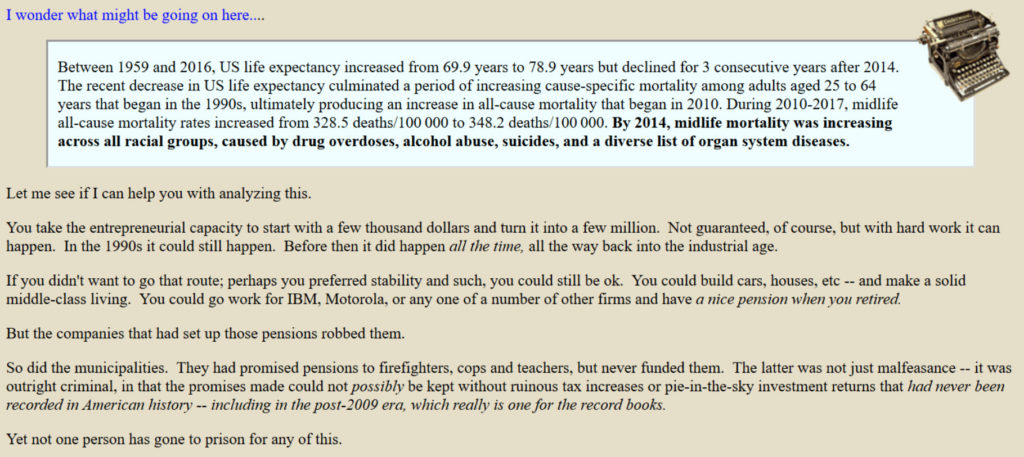
.
All of these factors have a role, but few comment on the non-economic factors, specifically the values that underpin the accumulation of capital that is the one essential project of middle class households.
Daniel Bell’s landmark 1976 book The Cultural Contradictions of Capitalism held that
"capitalism--and the culture it creates--harbors the seeds of its own downfall by creating a need among successful people for personal gratification--a need that corrodes the work ethic that led to their success in the first place."
I would phrase this in the language of values and capital: The primary cultural contradiction of the Great American Middle Class is the disconnect between the values needed to build capital and those of gratification via debt-based consumption.
Arrayed against these capital-accumulation-disciplined values are the consumerist values of instant gratification, short-term horizons, lack of long-term goals, self-indulgence, impulse buying, keeping up with the Joneses (i.e. competitive consumption), and an obsessive focus on the social/consumption pecking order of one’s peers, all of which incentivize debt-based consumption that spends future earnings today on non-essentials.
Which is true, if you sacrifice. Live in a van. Eat dumpster food while scrimping and saving every penny, and enjoying free soup kitchens, and making free iced tea from courtesy lemon packets in the fast food franchises.
I was astonished to read in $100,000 and up is not enough – even the ‘rich’ live paycheck to paycheck that busy couples spend $2,000 to $2,600 per month eating out. That’s roughly $30,000 a year, the equivalent of a brand-new vehicle plus a used car or one year of college–or a down payment on a rental home in a non-bubble locale.
The article contends that
"Many 'rich' people have problems accepting that they aren't really that wealthy and the money will not last forever."
This is an excellent summary of the consumerist mentality: income, wealth and financial security are all grossly over-estimated…
… while debt is under-estimated.
Conventional Americans may wonder how recent legal immigrants with modest-paying jobs buy homes and pay off the mortgage in a few years and then send their kids to university with zero student loans. In a conventional consumerist household earning two times as much annual gross income, this is viewed as “impossible.”
Perhaps if most American too, lived in multi-generational homes with thirty family members sharing the rent/mortgage and contributing to the collective they might do better. But America is the land of the "Lone Wolf". You are kicked out on the street at 18 years old, and must fend for yourself. Unless you have strong supportive family... Like the Oligarchy Class. Like the Upper Class. Like the Undocumented Class. You will always be at a disadvantage. Especially in a nation that has comprised laws designed to keep you firmly planted in the role that it establishes for you.
The Gig Class
The term “gig economy” refers to a free market system in which traditional businesses hire independent contractors, freelancers, and short-term workers to perform individual tasks, assignments, or jobs. The term comes from the world of the performing arts in which musicians, comedians, etc. are paid for their individual appearances, called “gigs.”
- In the gig economy, businesses hire independent contractors to perform individual jobs, called “gigs.”
- Hired and assigned via internet and smartphone applications, gig employees work remotely.
- While contract gig workers enjoy great scheduling flexibility and extra income, they suffer from relatively low pay, lack of benefits, and increased stress.
- In 2018, about 57 million Americans—nearly 36% of the total U.S. workforce—were full or part-time gig workers.
While such temporary arrangements offer tremendous advantages, like freedom and flexibility, workers in the rapidly-evolving gig economy are finding they face an increased risk of financial hardship.
How?
Without any support structures such as medical, retirement, pension, and similar systems, they are off alone and are totally responsible for their own income and benefits.
Much like traditional jobs, gig economy jobs are great—until they’re not.

.
In the “gig economy” or “freelance economy,” gig workers earn all or part of their incomes from short-term contracts under which they are paid for individual tasks, assignments, or jobs.
Typified by globally-recognized companies like Uber, and Lyft—which hire people to use their personal vehicles to provide taxi-like, on-demand ride services—gig economy companies use internet and smartphone-based applications to both hire and assign workers.
Each individual gig or assignment usually accounts for only a part of gig worker’s total income.
By combining several tasks for different companies, gig workers can realize cumulative earnings equal to those of conventional full-time jobs.
For example, some gig workers drive their cars for both Uber and Lyft, along with renting out rooms in their homes through Airbnb. Other people simply use gig jobs to supplement their regular income.

Another aspect of the gig economy involves so-called “digital earning platforms,” like eBay and Etsy, which allow people to earn money by selling their used items or personal creations, and online handyman services, like TaskRabbit.
In many ways, the gig economy reflects and facilitates the desire of millennial generation workers for greater flexibility in balancing their work-life demands, often changing jobs several times during their lifetimes. No matter what motives drive gig workers, the popularity of the internet, with its capability for remote work, has caused the gig economy to thrive.
But you all must be made aware... the idea that you can enter the Upper Class, or the Oligarchy Class from the Gig Class is a lie. It is not possible. ...You will NEVER become wealthy blogging. ...You cannot become a millionaire by posting sexy pictures in Instagram with 100 million followers. ...You are not going to enter the Upper class with an IoT invention. All those ideas are fantastical lies promoted by the oligarchy class to keep the lower classes complaisant and content with their lot in life.
Lower Class
The lower class is also referred to as the working class. Just like the middle and upper classes, the lower class can be divided into subsets: the working class, the working poor, and the underclass.
- Working Class
- Working Poor
- The Underclass
Compared to the lower middle class, lower class people have less of an educational background and earn smaller incomes. They work jobs that require little prior skill or experience and often do routine tasks under close supervision.

Walter Williams advice is great, but terribly dated. It applies to China, Australia, Italy, Poland, Russia, but not to the United States. The best that this pre-1960’s advice can get you in the USA today is better placement within your social-economic class, nothing more.
.
Working-class people, the highest subcategory of the lower class, often land decent jobs in fields like custodial or food service. The work is hands-on and often physically demanding, such as landscaping, cooking, cleaning, or building. Beneath the working class is the working poor. Like the working class, they have unskilled, low-paying employment.
However, their jobs rarely offer benefits such as healthcare or retirement planning, and their positions are often seasonal or temporary. They work as sharecroppers, migrant farm workers, house-cleaners, and day laborers. Some are high school dropouts. Some are illiterate, unable to read job ads.
How can people work full-time and still be poor?
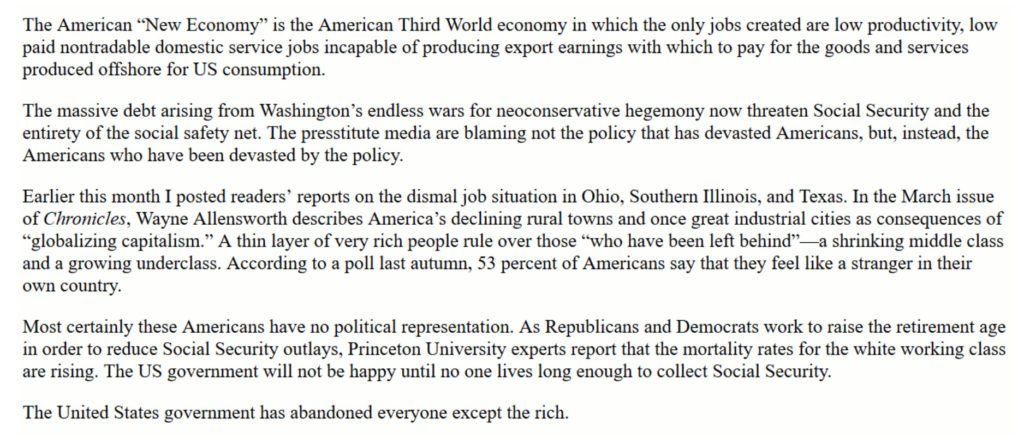
Even working full-time, millions of the working poor earn incomes too meager to support a family. Minimum wage varies from state to state, but in many states it is approaching $8.00 per hour (Department of Labor 2014). At that rate, working 40 hours a week earns $320. That comes to $16,640 a year, before tax and deductions. Even for a single person, the pay is low. A married couple with children will have a hard time covering expenses.

Members of the underclass live mainly in inner cities. Many are unemployed or underemployed. Those who do hold jobs typically perform menial tasks for little pay. Some of the underclass are homeless. For many, welfare systems provide a much-needed support through food assistance, medical care, housing, and the like.
Many socialists confuse the Slave, destitute and undocumented classes due to the type of income producing work they can obtain. Each class has it's own set of criteria that extends beyond income alone.
The Slave Class
This class is mandated by law.
The 13th amendment allowed slavery in the United States whenever someone is convicted of a felony. Thus, in the USA today, all Felons are members of the Slave Class.
As such, it is very difficult, if not impossible to get any employment outside the Low Class range, and this class distinction also places other Rights at risk. For instance owning a firearm, voting, or even boarding an airplane (with the no-fly list) can be impossible.
Professionals such as Doctors, and Engineers discover that they are forever barred from ever practicing their occupation. Whether it is through membership in a professional organization, or through the Human Resources department of a company, this class is persona non grata.
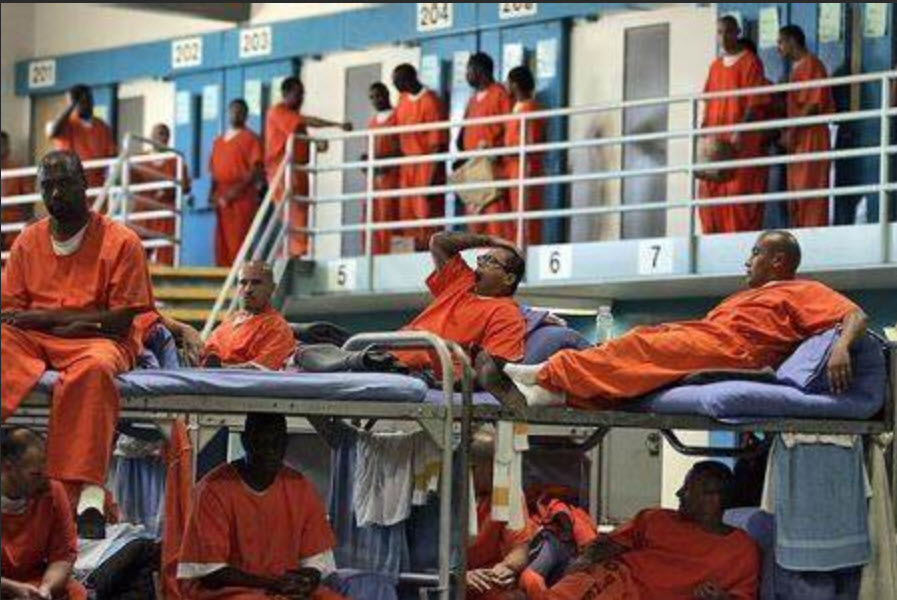
.
The only way out of this class is to have your felony expunged in a court of law. With a very small chance of this ever actually happening.
The Untouchable Class
This class is also mandated by law.
While the Slave Class has great hurtles, it is the untouchable class that lives within a real virtual prison. Every restriction possible by the local, state and federal governments apply. Where you live, where and how you travel, what you do, what you eat, and who you associate with are all regulated. Movement is redistricted if not curtailed, and all freedoms are absent.
- Sex Offender Restrictions | Worgul Law Firm
- Michigan Senate approves tightened restrictions in Sex …
- Citizen’s Guide To U.S. Federal Law On Sex Offender …
- SEX OFFENDERS’ RESIDENCY RESTRICTIONS
- Registered Sex Offender Laws | LegalMatch
- Residency Restrictions for Sex Offenders – FindLaw
Unable to work by law, and having housing restrictions, most end up trying to live in free-shelters or government housing. However new laws have made this impossible as any shelter that obtains federal funding is not permitted to accept members of this class.
The result is a destitute life.
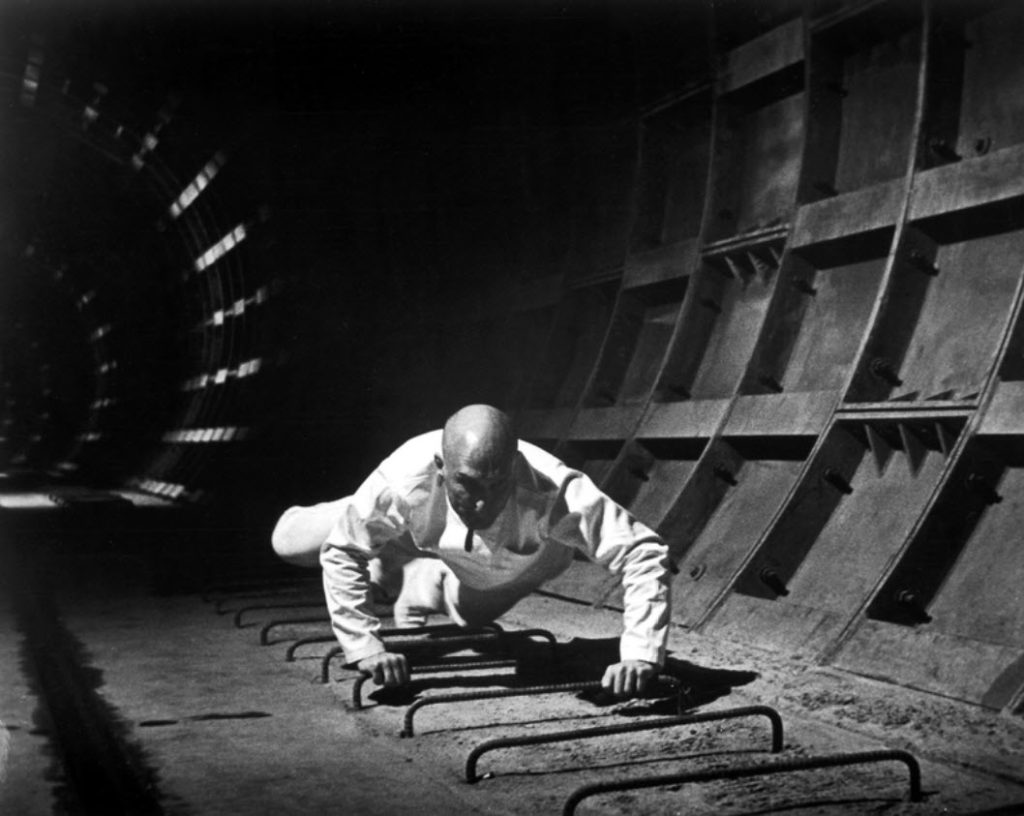
.
There is no exit from this class. In the United States, once you are on the “Sex Offender” list, you are on it for life.
The Undocumented Class
Yale, MIT study: 22 million, not 11 million, undocumented aliens live in the USA. This is a huge number. Seeing that the population of New York city is 6 million people.
The large number of illegal aliens can be attributed to a number of factors, including:
- Unsecured borders.
- An explosion in sanctuary jurisdictions throughout the United States, where local law enforcement authorities refuse to cooperate with U.S. Immigration and Customs Enforcement (ICE).
- The availability of jobs. Illegal aliens know they will find work because America has yet to put in place mandatory E-Verify for all employers.
- The increasing number of social welfare programs, and other benefits, given to illegal aliens by states and local governments – including in-state college tuition and driver’s licenses.
- Easily exploited asylum laws, flawed detention policies and a growing immigration court backlog that, for years, have allowed illegal aliens to obtain release from ICE custody and disappear into the interior of the United States.
- The on-going promise of amnesty by members of Congress and powerful special interests.
These individuals are recognized by the government legally, why they are not recognized socially is a mystery to me. I guess that it is just laziness on the part of sociologists.
This class has become somewhat of a political “football” used for distraction purposes. This class isn’t really “stealing jobs” from Americans, though it is deleting and siphoning away from the health and human benefits organizations that the Low Class uses to live off of.
It is unrealistic to believe that this class will eventually disappear though legislation. It is in America permanently.
Social Mobility
Social mobility refers to the ability to change positions within a social stratification system. When people improve or diminish their economic status in a way that affects social class, they experience social mobility.
Social mobility. Like this, perhaps…
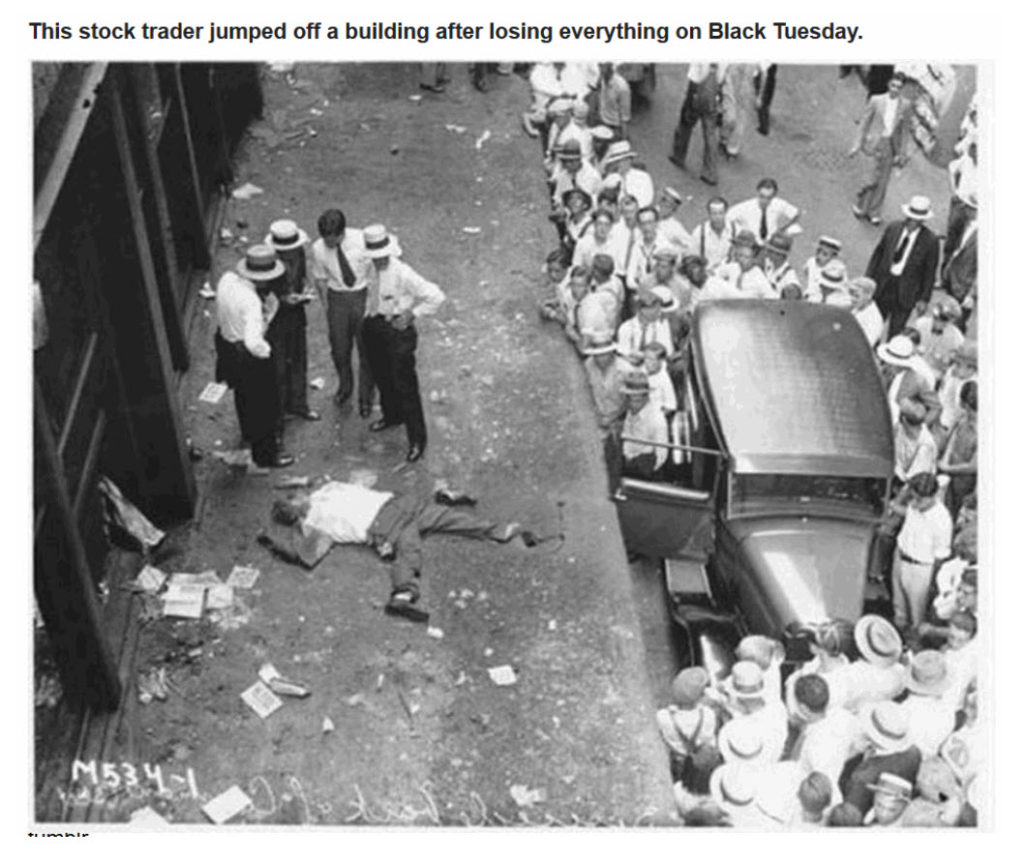
.
Individuals can experience upward or downward social mobility for a variety of reasons. Upward mobility refers to an increase—or upward shift—in social class. In the United States, people applaud the rags-to-riches achievements of celebrities like Jennifer Lopez or Michael Jordan.
Bestselling author Stephen King worked as a janitor prior to being published. Oprah Winfrey grew up in poverty in rural Mississippi before becoming a powerful media personality. There are many stories of people rising from modest beginnings to fame and fortune.
But the truth is that relative to the overall population, the number of people who rise from poverty to wealth is very small.
Still, upward mobility is not only about becoming rich and famous. In the United States, people who earn a college degree, get a job promotion, or marry someone with a good income may move up socially. In contrast, downward mobility indicates a lowering of one’s social class. Some people move downward because of business setbacks, unemployment, marriage, or illness.
Dropping out of school, losing a job, or getting a divorce may result in a loss of income or status and, therefore, downward social mobility.
It is not uncommon for different generations of a family to belong to varying social classes. This is known as intergenerational mobility. For example, an upper-class executive may have parents who belonged to the middle class. In turn, those parents may have been raised in the lower class. Patterns of intergenerational mobility can reflect long-term societal changes.
Similarly, intragenerational mobility refers to changes in a person’s social mobility over the course of his or her lifetime. For example, the wealth and prestige experienced by one person may be quite different from that of his or her siblings. Structural mobility happens when societal changes enable a whole group of people to move up or down the social class ladder.
Structural mobility is attributable to changes in society as a whole, not individual changes. In the first half of the twentieth century, industrialization expanded the U.S. economy, raising the standard of living and leading to upward structural mobility. In today’s work economy, the recent recession and the outsourcing of jobs overseas have contributed to high unemployment rates. Many people have experienced economic setbacks, creating a wave of downward structural mobility.
When analyzing the trends and movements in social mobility, sociologists consider all modes of mobility. Scholars recognize that mobility is not as common or easy to achieve as many people think. In fact, some consider social mobility a myth.
Class Traits
Class traits, also called class markers, are the typical behaviors, customs, and norms that define each class. Class traits indicate the level of exposure a person has to a wide range of cultures. Class traits also indicate the amount of resources a person has to spend on items like hobbies, vacations, and leisure activities.

.
People may associate the upper class with enjoyment of costly, refined, or highly cultivated tastes—expensive clothing, luxury cars, high-end fund-raisers, and opulent vacations.
People may also believe that the middle and lower classes are more likely to enjoy camping, fishing, or hunting, shopping at large retailers, and participating in community activities.
While these descriptions may identify class traits, they may also simply be stereotypes.
Moreover, just as class distinctions have blurred in recent decades, so too have class traits. A very wealthy person may enjoy bowling as much as opera. A factory worker could be a skilled French cook. A billionaire might dress in ripped jeans, and a low-income student might own designer shoes.
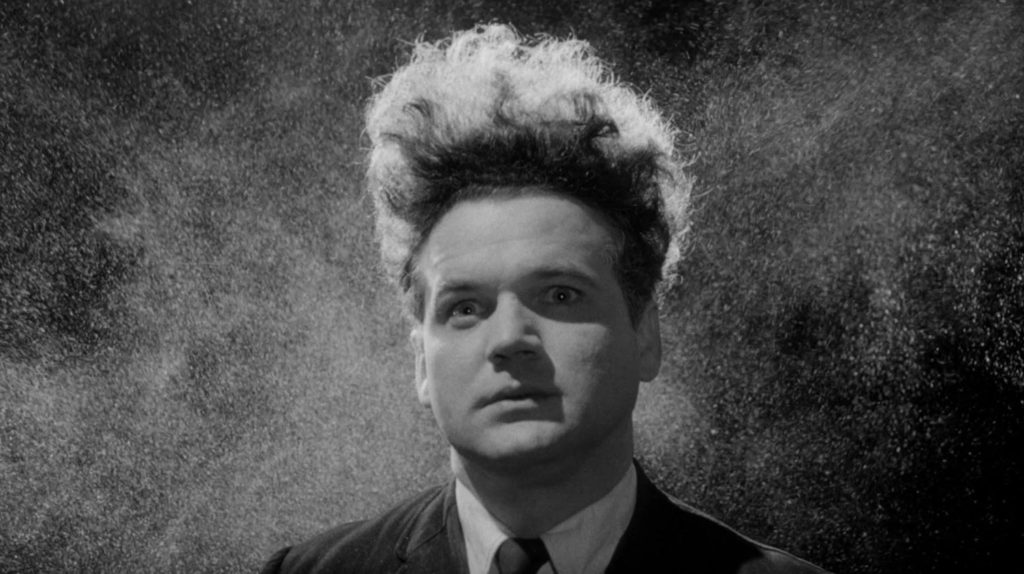
Models of Global Stratification
Various models of global stratification all have one thing in common: they rank countries according to their relative economic status, or gross national product (GNP).
Traditional Model Traditional models, now considered outdated, used labels to describe the stratification of the different areas of the world. Simply put, they were named “first world, “second world,” and “third world.” First and second world described industrialized nations, while third world referred to “undeveloped” countries (Henslin 2004). When researching existing historical sources, you may still encounter these terms, and even today people still refer to some nations as the “third world.”
More vs Less Developed Another model separates countries into two groups: more developed and less developed. More-developed nations have higher wealth, such as Canada, Japan, and Australia. Less-developed nations have less wealth to distribute among higher populations, including many countries in central Africa, South America, and some island nations.
GDP Yet another system of global classification defines countries based on the per capita gross domestic product (GDP), a country’s average national wealth per person. The GDP is calculated (usually annually) one of two ways: by totaling either the income of all citizens or the value of all goods and services produced in the country during the year. It also includes government spending. Because the GDP indicates a country’s productivity and performance, comparing GDP rates helps establish a country’s economic health in relation to other countries. This method can be terribly skewed upwards by a wealthy oligarchy class, thus providing inaccurate comparative data.
But the thing is, the GDP is only a reflection of the general health of a nation as long as the wealth is shared in a linear manner through out the classes. When the oligarchy became super-wealthy and gobbled up all the wealth, they skewed the GDP into unrealistic and deceptive numbers.
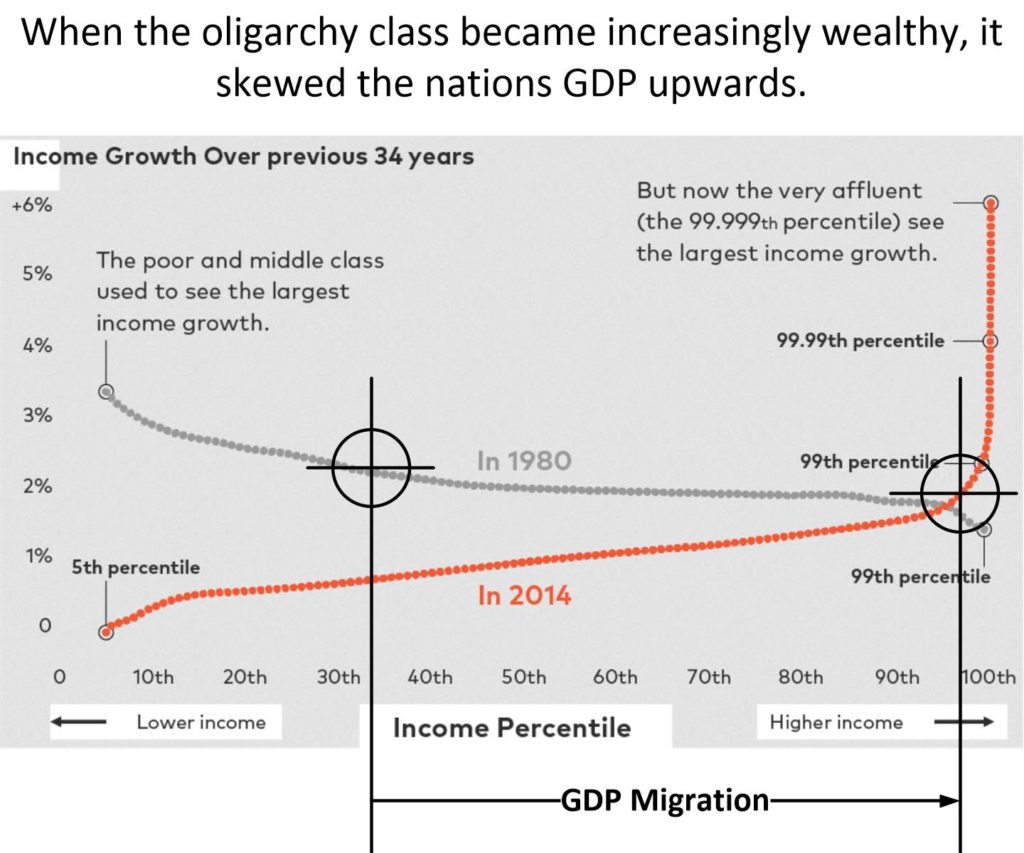
.
The solution to this problem, is to come up with a different way to determine the actual wealth of a nation. Thus we have the PPP.
Purchasing power parity (PPP) GDP PPP refers to the GDP converted to US dollars using purchasing power parity rates and divided by total population. Purchasing power parity (PPP) is used to adjust the exchange rate differences among countries. This economic theory states that the exchange rate between two currencies is equal to the ratio of the currencies’ respective purchasing power. PPP provides an opportunity to compare countries that have different standards of living by recalculating the value of a country’s goods and services as if they were being sold at U.S. prices. E.g. China and UK has a GDP of $200m and $175m respectively, where the GDP of China is more by $25m. Assuming a basket of goods cost $200 in China and $175 in the UK, 1 million baskets of goods can be purchased in China whereas 1.75 million baskets of goods can be purchased in the UK. According to the above, a higher GDP does not necessarily make a country richer, the relative purchasing power is important. In order to make price comparisons across countries, a wide range of goods and services must be considered. This is a very exhausting exercise; however, this has been made convenient by the International Comparisons Program (ICP) founded by the United Nations and University of Pennsylvania. ICP generates purchasing power parity rates based on a worldwide price survey that compares the prices of hundreds of various goods. This information can be used to compare countries to arrive at GDP PPP.
What’s Next
Well, if America [1] doesn’t change internally, and there are [2] no (additional) external wars, we can expect a tenth social class to be added. That of Chinese-Americans…
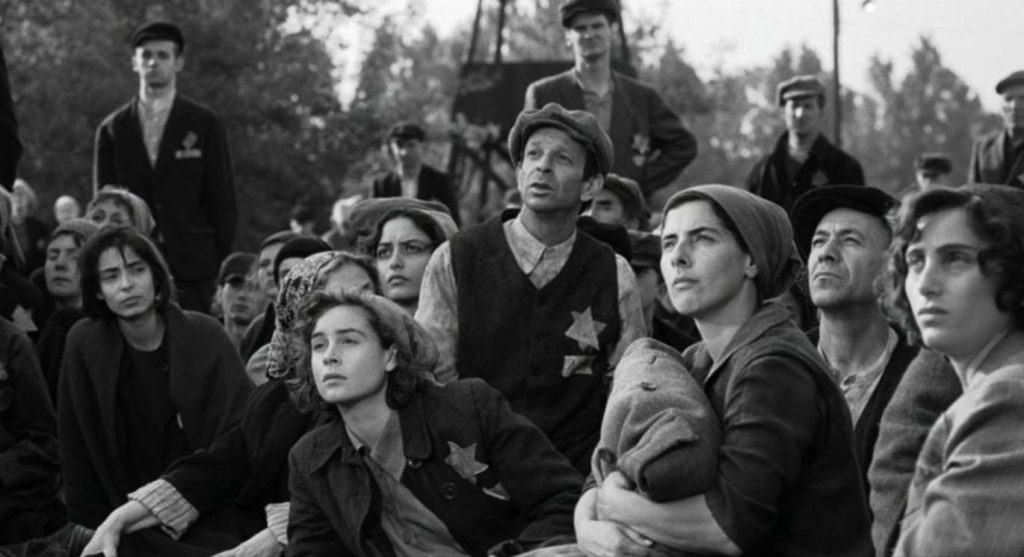
.
We can expect them to fit somewhere between the Slave Class and the Untouchables Class.
So what does this mean?
When you have a stratified class system, and…
When you have a small group of super wealthy people in control of most of the money, all of the government, and all of the services, media and policing actions you have a dictatorship by oligarchy.
When this organization is focused on external threats to the extent that wars are more desirable than repair of serious domestic emergencies, then you have an out-of-control military empire.
And with that, history has been very clear. They ALWAYS are destroyed catastrophically.
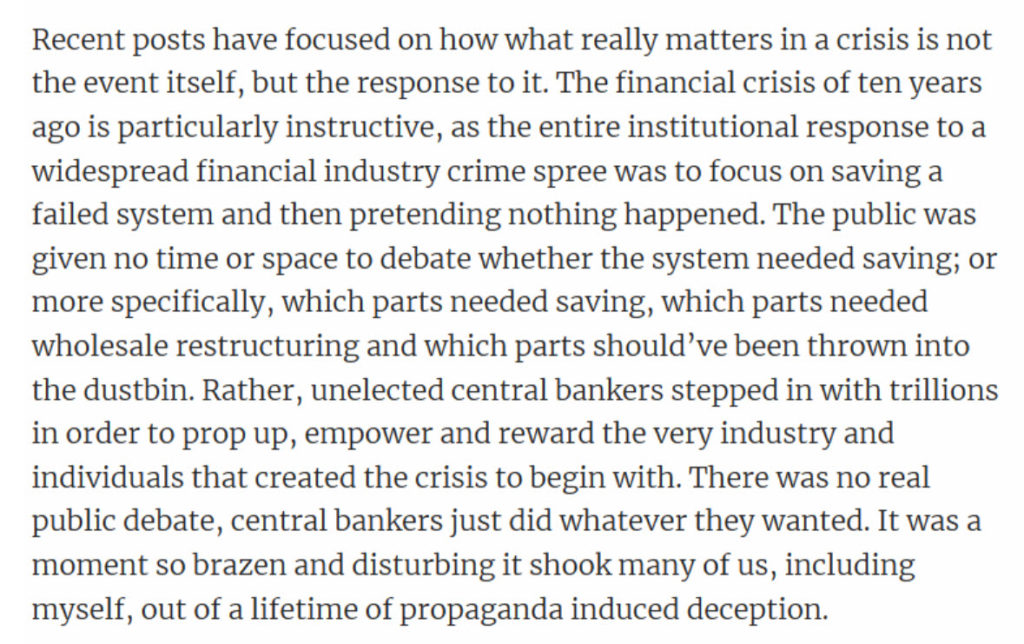
Summary
What Is Social Stratification?
Stratification systems are either closed, meaning they allow little change in social position, or open, meaning they allow movement and interaction between the layers.
- A caste system is one in which social standing is based on ascribed status or birth.
- Class systems are open, with achievement playing a role in social position. People fall into classes based on factors like wealth, income, education, and occupation.
- A meritocracy is a system of social stratification that confers standing based on personal worth, rewarding effort.
Social Stratification and Mobility in the United States
There are nine main classes in the United States. Social mobility describes a shift from one social class to another. Class traits, also called class markers, are the typical behaviors, customs, and norms that define each class.
Conclusion
All this shit about stratification in the USA gives me a headache. You all don’t have to believe that it is stratified. You can believe that narrative that is being piped to you 24/7 by the “news” media… that anyone can become rich and wealthy and successful.
Just look at all those instagram models… for instance.
- The shocking truth about Instagram models! | by Dating …
- Influencers Reveal the Truth Behind Perfect Instagram …
- Those Dubai trips: The truth about your favourite …
The truth is that the class that you inherited is pretty much the upper limit of where you will end up and retire into. All those articles about Steve Jobs, Bill Gates, and the Jeff Bezos are just fantasies. They only apply to the 0.00001% of the population, and if you believe that you are part of that elite group then go for it.
Just realize that the “deck of cards” is all stacked up against you. Not just socially, and culturally, but also mandated by law. You are fucked.
If I sound like a grouchy old geezer, who is a little long in the tooth and disgruntled, then maybe I am. But I have good reason to be. So listen to me…
…the ONLY way that you can exit your birth class, as an American, is to leave America. Other than that, you are locked in place, and upward mobility is pretty much closed to you. As we used to say in Pennsylvania, “it’s a closed country club, and you ain’t in it.”
Overall, 2020 has been a God-damn shitty year!
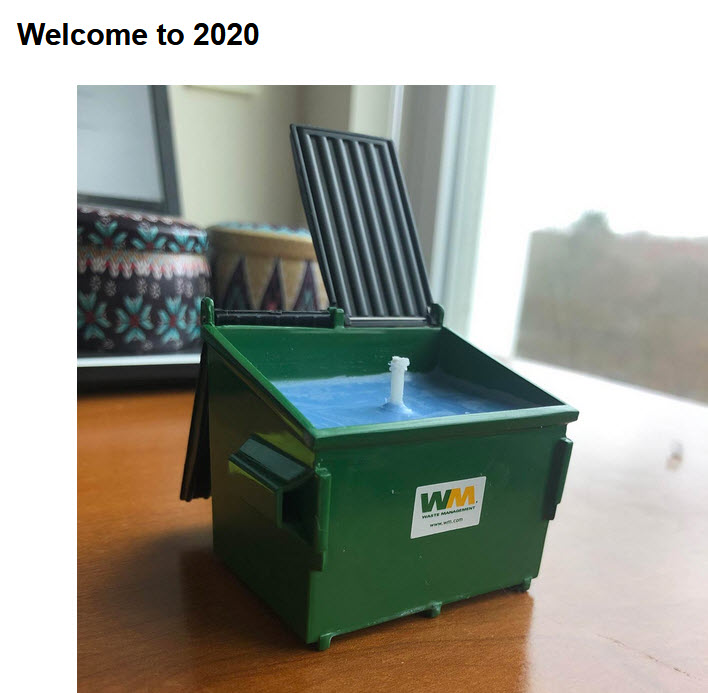
.
It’s so very true. No one has yet to disagree. And with that being said, this all pretty much says it all…

.
Yah, but let’s end this post on a high note…
The Saturday Night Joke Very heartwarming....read to the end. It's worth the read. Every morning, the CEO of a large bank in Manhattan walks to the corner where a shoe shine is always located. He sits on the couch, examines the Wall Street Journal, and the shoe shine gives his shoes a shiny, excellent look. One morning the shoeshine asks the Executive Director: "What do you think about the situation in the stock market?" The Director asks in turn arrogantly: "Why are you so interested in that - that topic?" "I have a million dollars in your bank," the shoeshine says, "and I'm considering investing some of the money in the capital market." "What your name? –"Asks the Director. "John Smith." The Director arrives at the bank and asks the Manager of the Customer Department: "Do we have a client named John Smith?" "Certainly –"answers the Customer Service Manager–, "he is a highly esteemed customer. He has a million dollars in his account." The Director comes out, approaches the shoeshine, and says: "Mr. Smith, I ask you this coming Monday to be the guest of honor at our board meeting and tell us the story of your life. I am sure we will have something to learn from you." At the board meeting, the Executive Director introduces him to the board members: "We all know Mr. Smith, who makes our shoes shine in the corner; But Mr. Smith is also our esteemed customer with a million dollars in his account. I invited him to tell us the story of his life. I am sure we can learn from him." Mr. Smith began his story: "I came to this country fifty years ago as a young immigrant from Europe with an unpronounceable name. I got off the ship without a penny. The first thing I did was change my name to Smith. I was hungry and exhausted. I started wandering around looking for a job but to no avail. Suddenly I found a coin on the sidewalk. I bought an apple. I had two options: eat the apple and quench my hunger or start a business. I sold the apple for two dollars and bought two apples with the money. I also sold them and continued in business. When I started accumulating dollars, I was able to buy a set of used brushes and shoe polish and started polishing shoes. I didn't spend a penny on entertainment or clothing, I just bought bread and some cheese to survive. I saved penny by penny and after a while, I bought a new set of shoe brushes and ointments in different shades and expanded my clientele. I lived like a monk and saved penny by penny. After a while I was able to buy an armchair so that my clients could sit comfortably while cleaning their shoes, and that brought me more clients. I did not spend a penny on the joys of life. I kept saving every penny. A few years ago, when the previous shoe shine on the corner decided to retire, I had already saved enough money to buy his shoeshine location at this great place. Finally, three months ago, my sister, who was a whore in Chicago, passed away and left me a million dollars." -From Busted Knuckles (Bless that ornery old' coot.)
Ah.
That’s all fun and games, but now for the REAL STORY…
A janitor making $4/hour walked into a Fortune 500 company boardroom. Shaking, he took a seat opposite the CEO. "So I had an idea..." he nervously began. Years later, that idea would become an iconic consumer brand and make him worth ~$20M. Here's how that meeting went: 1) Richard Montañez grew up in Cucamonga Valley, California, sharing a one-room cinderblock hut with 14 family members. He dreaded school. Barely able to speak English, he’d cry to his mother as she was getting him ready for class. 2) When asked, all other students in class would eagerly shout out their dream job: Astronaut, Doctor, Racecar driver. Richard had nothing to say. “There was no dream where I came from.” 3) He dropped out of school in 4th grade and took odd jobs at farms and factories to help make ends meet. Some years later in 1976, a neighbor let him know of a job opening for a factory janitor at the Frito-Lay plant down the road. The $4/hour pay was more than he'd ever made. 4) As he was getting ready for his first day of work, his grandfather pulled him aside and said: “Make sure that floor shines. And let them know that a Montañez mopped it.” 5) Richard made it his mission to be the best janitor Frito-Lay had ever seen. He spent his off-time learning about the company's products, manufacturing, marketing and more. He even asked salesmen to tag along and watch them sell. 6) In the mid-1980s Frito-Lay started to struggle. The CEO announced a new initiative to all 300,000 employees. “Act like an owner” Trying to empower them to work more creatively and efficiently. Montañez listened. 7) Then, he called the CEO. “Mr. Enrico’s office. Who is this?” “Richard Montañez, in California” “You’re the VP overseeing CA?” “No, I work at the Rancho Cucamonga plant.” “Oh, so you’re the VP of Ops?” “No, I work inside the plant.” “You’re the manager?” “No. I’m the janitor.” 8) The CEO got on the line. Loving the initiative, he told Richard to prepare a presentation, and he set a meeting in 2 weeks time. Stunned, Richard ran to the library and picked up a book on marketing strategies. Then, he started prepping. 9) 2 weeks later, he entered that boardroom. After taking a moment to catch his breath, he started telling them what he'd learned about Frito-Lay and the idea he'd been working on. 10) “I saw there was no product catering to Latinos.”. On the sales trips he shadowed he saw that in Latino neighborhoods Lays, Fritos, Ruffles, and Cheetos, were stocked right next to a shelf of Mexican spices. Frito-Lay had nothing spicy or hot. 11) The Latino market was ready to explode, Monteñez explained. Inspired by elote - a Mexican street corn covered in spices - Richard had created his own snack. He pulled out 100 plastic baggies. He had taken Cheetos from the factory and coated them in his own mix of spices. 12) He’d even sealed the bags with a clothing iron, and had hand drawn a logo on each one. The room went silent. After a few moments, the CEO spoke, “Put that mop away, you’re coming with us”. 13) Flamin’ Hot Cheetos became one of the most successful launches in Frito-Lay history. They went on to become a viral, pop-culture sensation. Richard became a VP and amassed a $20M fortune. Not bad for a boy from Cucamonga. -From Busted Knuckles (Bless that ornery old' coot.)
As he said with open honesty and pluck…
“I can say with confidence that Mr. Monteñez has done more to help the human race than a hundred soy boys with bachelor’s degrees in Botswanian Lesbian Feminist Interpretive Tap-Dancing Studies with tens of thousands of dollars in student loan debt who’ve graduated with nothing but an unwarranted sense of entitlement and a sour attitude.
I have nothing to add to this story, other than reading it was like a breath of fresh air, and why don’t we hear more stories like this? Then I recall the inclinations of the people who are running our media, and the answer is obvious.”
…
The United States might be segregated and stratified by class, and by law, but you still have two hands and a brain. Whether you have the spunk and pluck to climb to the top of the oligarchy class, or not. Whether you have sunk to the untouchable class or not, your life is in your hands.
Make your life special.
Do you want to see similar posts?
I hope that you found this post curious. Please take care. You can view other similar posts in my SHTF Index, here…
SHTF ArticlesArticles & Links
You’ll not find any big banners or popups here talking about cookies and privacy notices. There are no ads on this site (aside from the hosting ads – a necessary evil). Functionally and fundamentally, I just don’t make money off of this blog. It is NOT monetized. Finally, I don’t track you because I just don’t care to.
- You can start reading the articles by going HERE.
- You can visit the Index Page HERE to explore by article subject.
- You can also ask the author some questions. You can go HERE to find out how to go about this.
- You can find out more about the author HERE.
- If you have concerns or complaints, you can go HERE.
- If you want to make a donation, you can go HERE.
Please kindly help me out in this effort. There is a lot of effort that goes into this disclosure. I could use all the financial support that anyone could provide. Thank you.

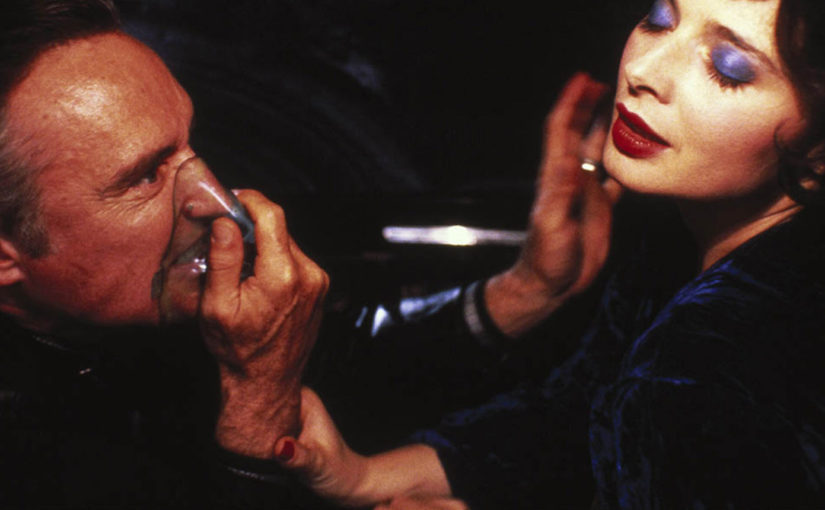

The CIA took out Ray Dalio’s son last week too, in an “unintended acceleration” event in which his car mysteriously burst into fiery flames after crashing into a Verizon 5G store at high speed in a parking lot…
Many folks in the intel and defence communitities of Amerikkka including high ranking US general publicly expressed extreme displeasure with Dalio recently, even on twitter to warn him
Dalio was previously advised to change the title of his upcoming book which was generally positive on China and critical of America, it was set to release this fall but now postponed and delayed to at least next year…
Between this and the Zappos guy, and the Chinese producer set to make The Three Body Problem film its clear Amerikkka is systematically purging all prominent Chinese Americans and prominent figures with Pro-China views (Ray Dalio)
Disturbing, but unavoidable. Much of this was planned years ago, and even though the neocons are disbanding out of their temporary abodes in Washington DC, the systems that they have set in motion will continue to turn and activate until they sputter and run out of gas.